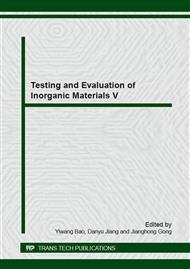p.439
p.443
p.447
p.451
p.455
p.459
p.463
p.467
p.472
Measurement of Residual Stress in Diesel Engine Castings
Abstract:
The mechanical properties of materials and structural components, notably fatigue life, brittle fracture, dimensional stability, deformation and crack propagation can be considerably influenced by residual stresses inside bodies. Accordingly, residual stresses analysis is a compulsory stage in the design of parts and structural elements and in the estimation of their reliability under real service conditions. In this paper, x-ray diffraction and hole-drilling method were used to measure residual stresses in diesel iron castings. The purpose is to determine the residual stresses distribution and analyze the annealing process on the influence of residual stress.
Info:
Periodical:
Pages:
455-458
Citation:
Online since:
November 2014
Authors:
Price:
Сopyright:
© 2015 Trans Tech Publications Ltd. All Rights Reserved
Share:
Citation:


